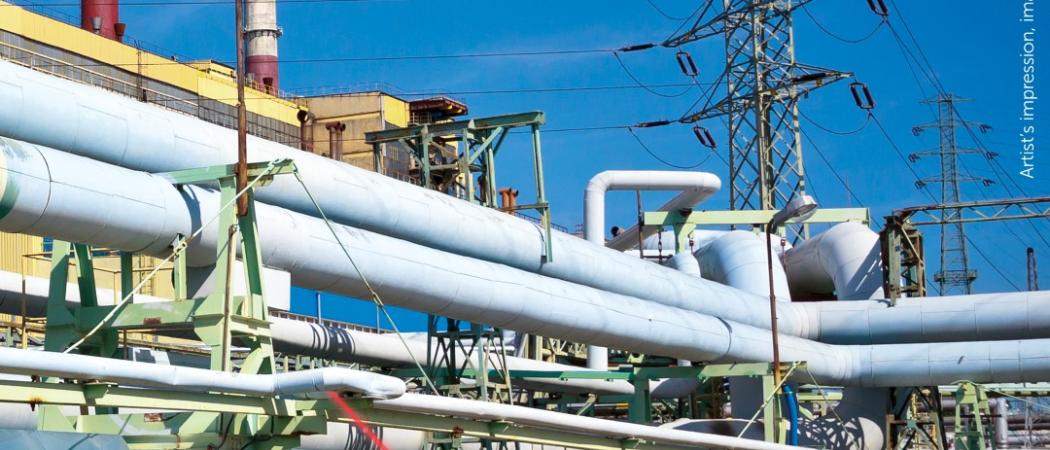
EU researchers are developing new autonomous robots, fitted with tiny chemical sensors that listen to the ‘sounds’ coming off gases that will instantly detect gas leaks in petrochemical plants and pipelines to dramatically improve disaster responses.
The risk of a petrol plant explosion or a potential disaster on an oil refinery could be dramatically reduced thanks to a new generation of tiny chemical sensors that use light and sound to ‘listen to’ gas leaks.
Fitted to an autonomous patrolling robot, the tiny ‘Photo-Acoustic’ gas sensors will be part of a wireless network continuously monitoring pipelines that can instantly identify petroleum, hydrogen sulphide, and a number of toxic gases, before alerting operatives in an oil rig or chemical plant.
Current state of the art technologies can take anything up to 8 minutes per measurement and give off ‘false positives’ when detecting gas leaks. However, a group of EU researchers are exploiting new techniques that combine both photonic and acoustic technologies to positively identify a leak in milliseconds.
The multi-discipline consortium, calling themselves ‘REDFINCH’ (or mid infraREd Fully Integrated CHemical sensors) have combined light together with sound to increase the detection sensitivity of the wavelength ‘fingerprint’ of a gas so that it can be positively identified. Project dissemination manager, David Williams explains:
“To use a monitoring system where lives and expensive equipment are at stake, the ability to act instantaneously is paramount.”
“Current detection technology using infrared systems is often large, bulky, slow, and the detectable wavelengths are restricted. By combining a number of different platforms, never considered before with automated gas detection, we have come up with the solution of Photonic Integrated Circuits used with micro Photo-Acoustic Sensors (PIC-μPAS)” Williams said.
As well as the wreckage and considerable expense, events like the Magodo Gas Plant Explosion in Nigeria (2015), the Port of Rizhao petrol plant explosion (2015) in China, and the Buncefield oil storage explosion in Hatfield, England (2005) can devastate communities, leaving a mark for generations.
“The REDFINCH consortium is developing Photonic Integrated Circuits (PICs), using hybrid and monolithic integration of III-V diode and Interband Cascade/Quantum Cascade materials with silicon to create high performance, cost effective sensors. Essentially using light and sound together allows us to produce a more specific detection and to be more accurate.”
The REDFINCH team believe they can create a detector that is several times cheaper and more robust than existing technologies.
“By integrating all the components, such as the laser, the detector and the sensing chamber all onto one single chip, we reduce the possible points of failure and more importantly, the ‘noise’ ratio to improve the sensing capabilities. Shifting everything onto one silicon chip makes things more convenient and less expensive.” said Williams.
The developed sensors can be quickly scaled up to volume production using the mirPHAB pilot line, an Horizon 2020 funded pilot line for mid-infrared PIC development in Europe, which also closely involves a number of REDFINCH partners.
Milk Protein Analyser
Not only restricted to oil and gas refineries, the REDFINCH sensor is being developed to be used as a protein analysis sensor within the dairy industry, installed as an in-line monitor on the collection tanker.
“The REDFINCH devices are very exciting,” Williams explained “because they can also be used as a protein sensor, enabling analysis of the milk at the collection tanker, and thereby allowing efficient redirection and distribution of the consignment.”
Discriminating between different milk proteins, the REDFINCH sensor could provide instant information on the quality of the milk obtained.
“State of the art milk analysers cannot differentiate between different types of proteins; they can only quantify the total protein content in a sample,” Williams said.
The REDFINCH consortium secured a grant of € 3,993,211.25 from Horizon 2020 via the Photonics Public Private Partnership and hopes to have a prototype ready in 2021.
Participants from five European countries include: CEA-Leti (France, Coordinators); Cork Institute of Technology (Ireland); The University of Montpellier, MIRSENSE (France); Argotech (Czech Republic); Fraunhofer-Gesellschaft zur Förderung der angewandten Forschung, Endress+Hauser process solutions (deutschland) GMBH (Germany); Technische Universitaet Wien (Austria).
---
About REDFINCH
About Photonics21
Photonics21 is the European Technology Platform (ETP) for photonics, a technology encompassing all of the products and processes around the emission, manipulation and detection of light. Photonics is integral to a wide range of industries that include the medical, healthcare, transport, manufacturing, and telecommunications sectors.
"Photonics21" was set up in December 2005 to bring the community of photonics researchers and industries together. The European Commission defined photonics as one of six European Key Enabling Technologies (KET's) in September 2009. Shortly after, the European Research & Innovation Program "Horizon 2020" invited Photonics21 to become a "Public Private Partnership" (PPP).
The "Photonics 21 Association", a legal entity under Belgium law, became the private contract partner in November 2013 in a Public Private Partnership (PPP) in conjunction with the EU Commission.
Today Photonics21 represents more than 3000 personal members from across Europe and abroad. Our members are experts in the photonics industry, research organisations and universities who actively engage with us to develop a joint photonics strategy for future research and innovation in Europe.
With the global photonics market growing from €350 Billion in 2011 to €447 Billion in 2015, Photonics remains a strong industry. The European photonics industry, estimated to be worth €70 billion, has considerable global leadership positions and employs over 300,000 people directly.
With positive growth forecast, current industry trends like digitalisation, resource efficiency, individual and zero failure production will drive the photonics industry further.




 A unique international forum for public research organisations and companies to connect their external engagement with strategic interests around their R&D system.
A unique international forum for public research organisations and companies to connect their external engagement with strategic interests around their R&D system.